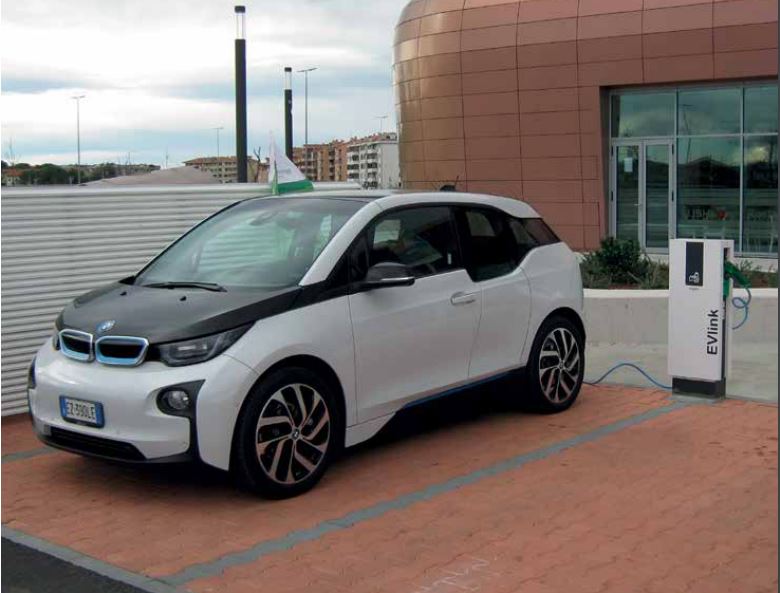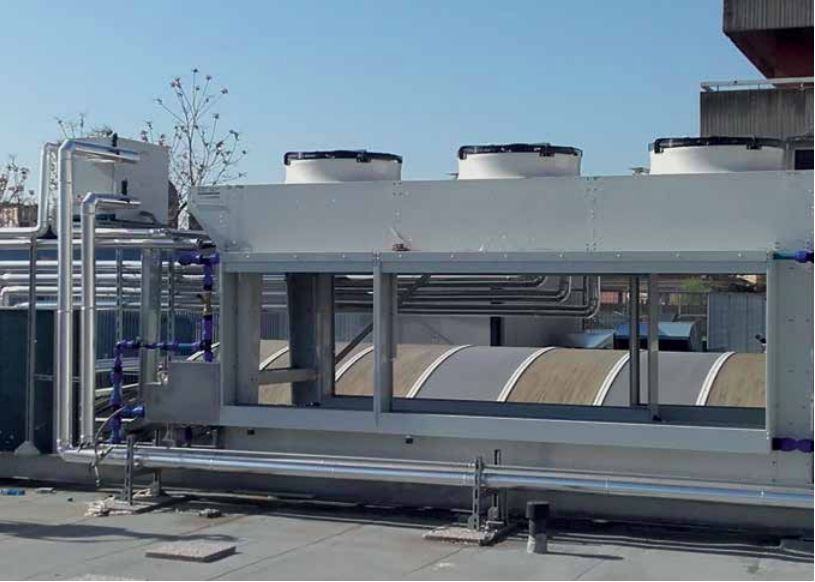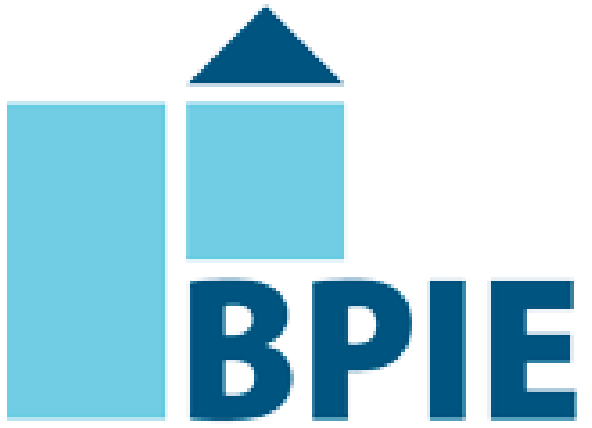Smart Buildings at the Heart of the Cities of Tomorrow
Smart technologies are already shaping our lives and they are becoming more and more environmentally-friendly. Once considered science fiction, smart houses are now becoming a reality. The integration of technology and energy efficiency in the building industry is still underway. BPIE looks at the elements that shape a smartly-built environment and how to inspire green solutions.
What will our future cities look like? We may envision futuristic architecture, but we can also imagine a deeper integration of our buildings and the smart technologies we have come to expect in other areas of our lives. Europeans spend 90% of their time indoors, so it is also important that we continue to search for new ways to integrate smart technologies that will lower the ecological impact of the energy used by our infrastructures. Buildings consume 40% of the EU’s energy and are responsible for a third of greenhouse gas emissions. Smart technology in buildings can empower citizens to control their energy consumption while leading the way to transform the EU’s energy system.
Buildings consume 40% of the EU’s energy and are responsible for 1/3 of greenhouse gas emissions.
The potential societal benefits from integrating smart technology into buildings are numerous: users could control their renewable energy production and consumption, cut energy bills and take better advantage of the traffic on the energy grid through innovative systems that map the energy usage and needs of the occupants, like electric vehicles. These technologies will also create new jobs in expanding markets, facilitating the surge of renewable energy and reinforcing our energy security.
Some countries have already begun to embrace the possibilities offered through smart technology by putting legislation in place that will begin to shape a more environmentally-friendly building industry. This shows a changing mindset that will allow Europe’s building sector to see progressive and sweeping changes. Though the possibilities are endless, here are a few measures that have already been taken:
Smart meters in Sweden
A smart-ready built environment takes advantage of the full potential of ICT and innovative systems to adapt its operation to the needs of the occupant, to improve its energy performance, and to interact with the grid. One of the first steps towards creating a smart and integrated energy system is the use of smart meters. In Sweden, a full roll-out of smart meters was already achieved in 2009. These meters mean that electricity bills are based on consumption data collected hourly by 95% of the meters. 80% of these meters can even facilitate a two-way direct link between the occupant and the energy provider, enabling greater transparency and smarter energy planning. This transition in Sweden was induced through legal measures requiring that customers be able to see a monthly-meter reading of their energy consumption. For distribution companies, smart meters allowed them to meet this requirement more efficiently.

District heating in Denmark
Smart urban heating planning is designed around balancing demand with resource availability. Through an efficient distribution network based on renewable energy and waste heat, the user’s thermal comfort is maintained. From an economic perspective, this makes the combination of district heating and energy efficient buildings feasible. In a dynamic energy market, smart buildings connected to district heating sell their excess energy, cutting down the heat-load peak, and allowing the district heating supplier to avoid running peak-load boilers. District heating could integrate excess heat (heat recovery of cooling systems or data centers), heat pumps driven by photovoltaic solar panels, as well as geothermal and solar thermal energy.
Today most Danes receive their heat from a district heating system.
District heating is a cornerstone for Denmark’s smart cities such as Sønderborg where the implementation of district heating has enabled a greater uptake of renewables and smarter energy use overall. The role of district heating systems has only increased since 1990 and these systems have played a considerable role in reducing national CO2 emissions. District heating was the Danes’ answer to the oil crisis in 1973 that affected the then-oil-dependent country. The government began investing heavily in renewables, energy efficiency, and district heating. Even when oil prices dropped, the government increased taxes to support the more environmentally friendly solutions. Thanks to those efforts, today most Danes receive their heat from a district heating system.
Smart case studies
Though the above examples demonstrate several ways in which the use of smart technology can help to improve living conditions through healthy buildings – a prerequisite of a smart-ready built environment – while conserving energy and saving money, there are still more ways that smart buildings can use technology to create a high-quality environment while integrating renewable energies.
The building performance, indoor air quality and the ability to keep the indoor temperature at a comfortable level are vital characteristics of a smart built environment. These environments should empower occupants with control over the energy flow through connected technical building systems and other appliances inside the building, like smart thermostats and refrigerators, as well as security and access-related systems.

Smart built infrastructures should use energy-system-responsive technologies that coordinate with the energy grid to ensure the maximal efficiency of the grid, especially during peak loads. Through a demand-response system and the integration of energy storage capacities into buildings, the energy grid will be better balanced and able to accommodate a larger population. This would also increase the number of electric cars that could be used on the grid, which would help to further reduce the reliance on fossil fuels.
Smart urban heating planning is designed around balancing demand with resource availability.
Smart built infrastructures can also integrate renewable energy sources into the building, through photovoltaic cells, solar thermal, and geothermal energy sources. Through inter-operating in a small district with many buildings utilizing renewable energy, a district biomass heating system or waste heat distribution could be used as well.
The following examples are case studies detailing building projects that have made use of smart technologies, integrating one or more of the ideas above.
Smart Office Buildings
The Edge office building in Amsterdam is a leading example of the integration of smart technologies. The building uses 70% less electricity than comparable office buildings and is equipped with the largest array of photovoltaic panels of any office building in Europe. These panels are located on the roof a south-facing façade to maximize their efficiency. The Edge has an aquifer thermal energy storage system that provides all the building’s energy needs for heating and cooling. A heat pump is connected to this storage system, which further increases its efficiency.
The building and its users are also connected via a smartphone app. This app can direct users to a parking spot, saving them from circling in search of one. The app also helps users locate a desk and stores their individual preferences for light and temperature, adjusting those elements wherever the user goes. Through technology, The Edge combines heating and energy solutions with connectivity to make the building a leader in smart building.
Residential Storage, Load Shifting and Flexibility
To demonstrate flexibility and grid balancing in action across a neighborhood, a dozen houses in Oud-Heverlee, Belgium, have been equipped with a range of technologies to provide a maximal load-shifting potential. The houses are a mix of old and new, though all have been equipped with an assortment of photovoltaic cells, solar-thermal energy, and heat pumps. Some have a fuel cell, some a battery, and some The building and its users are also connected via a smartphone app. This app can direct users to a parking spot, saving them from circling in search of one. The app also helps users locate a desk and stores their individual preferences for light and temperature, adjusting those elements wherever the user goes.
Through technology, The Edge combines heating and energy solutions with connectivity to make the building a leader in smart building. both, but all have been equipped with advanced monitoring and control systems. One of the buildings – equipped with all available smart technologies ranging from household appliances to an electric car – can even maintain grid independence for a period of several days. Through a flexible smart-control system, the merits of the different systems will be tested, with results available in late 2017.
Supermarket and District Heating Connectivity
In Denmark, district heating networks allow supermarkets to provide heat to private homes. Around 20 supermarkets are connected to the network, with surplus heat from their refrigeration systems integrated into the broader energy system. SuperBrugsen in Høruphav saves more than €25,000 annually on gas, and reduces their CO2 emissions by 34% just through using the surplus heat from the refrigeration system to supply hot water. With a connection to the district heating network, they can also supply heat to 16 homes annually. The project was inspired by the vision put forward by Sønderborg to become zero-carbon by 2029.
Work within the European-funded FP7 project CommONEnergy has proven that supermarkets and shopping centers can become energy hubs, playing an active role in their interaction with the smart grid. More than 25 innovative technologies – including solutions for heating, lighting, and ventilation – were developed and installed in demo cases with the aim of improving comfort, reducing operating costs, and reducing overall energy consumption.
Though there are several mechanisms in place around Europe to facilitate the integration of smart technologies, Europe is not ready overall to embrace fully the transition to smart buildings. Technology is rapidly evolving, and so must we. Europe needs to push progressive policies, opening the market for the efficient cities of the future.
For a more in-depth analysis of the subject, see BPIE’s report “Is Europe Ready for the Smart Buildings Revolution?”

The Buildings Performance Institute Europe (BPIE) is a European not-for-profit think-tank with a focus on independent analysis and knowledge dissemination, supporting evidence-based policy making in the field of energy performance in buildings. It delivers policy analysis, policy advice and implementation support.